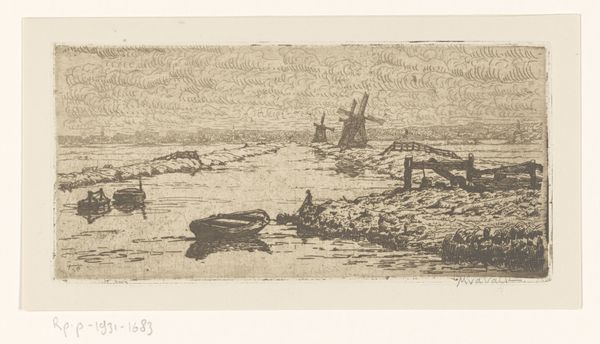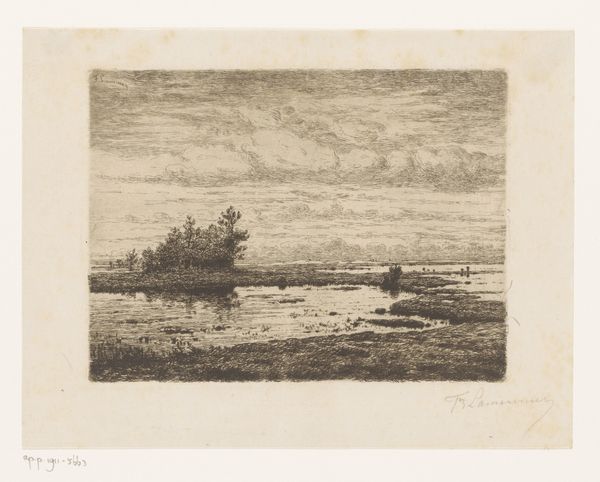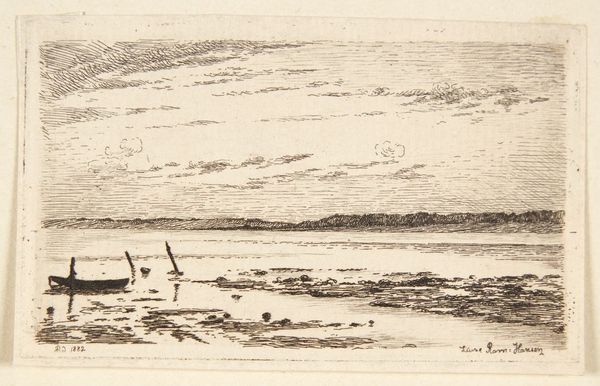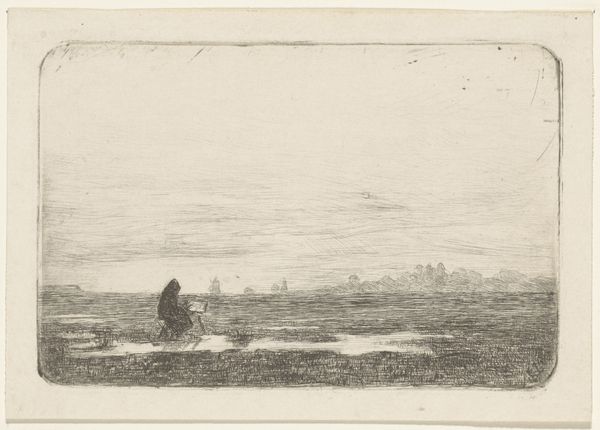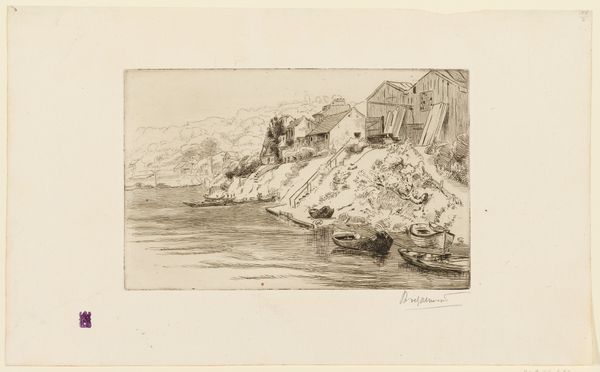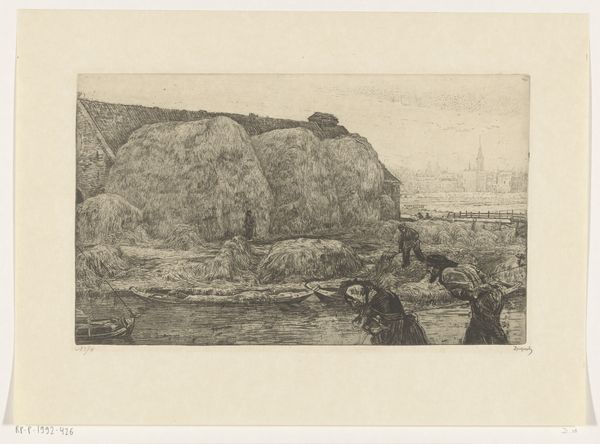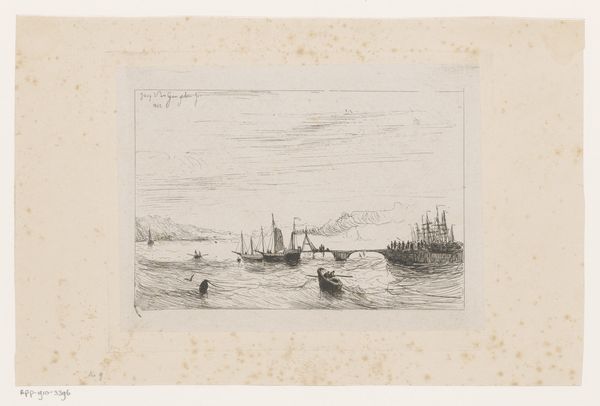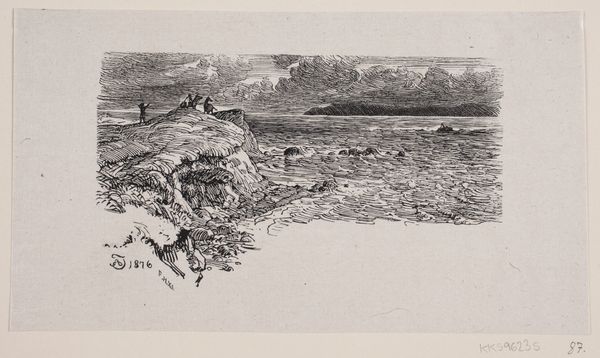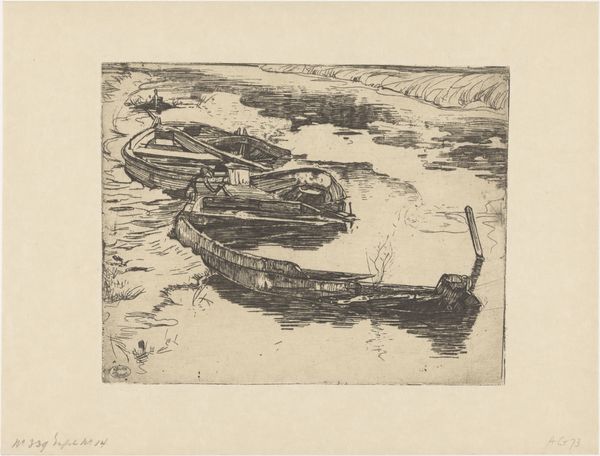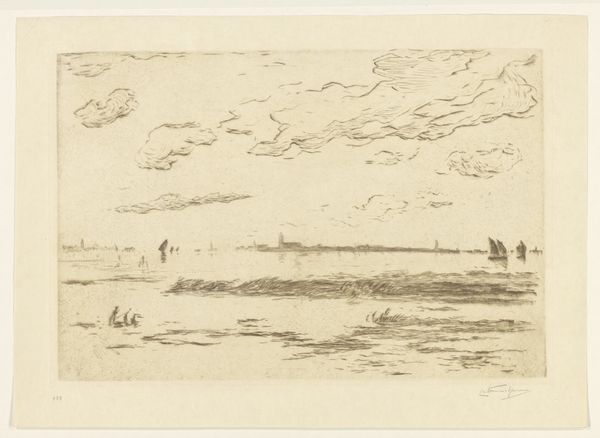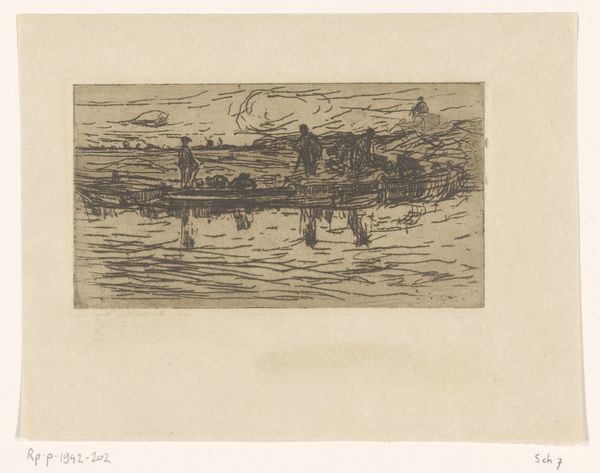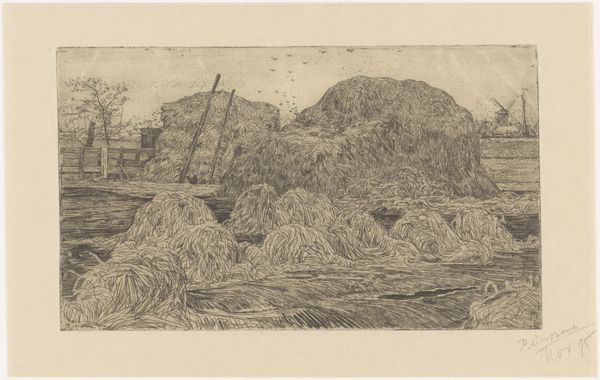
print, etching
# print
#
etching
#
landscape
#
genre-painting
#
realism
Dimensions: height 132 mm, width 355 mm
Copyright: Rijks Museum: Open Domain
Curator: Here we have Carel Nicolaas Storm van 's-Gravesande's etching, "Zeewierplukkers aan de kust bij Veules," or "Seaweed Harvesters on the Coast at Veules," from around 1873. It’s currently residing here at the Rijksmuseum. Editor: My initial feeling? Quiet resilience. The low horizon, the figures bent to their work – it's a scene both melancholic and strangely hopeful. Like a poem about the daily grind by the sea. Curator: Precisely! This print exemplifies the Realist movement, showing an unromanticized view of labor. Van 's-Gravesande turns an everyday activity into a contemplative subject. Note how the figures are placed, almost swallowed up by the vastness of the beach, highlighting their connection to the land and sea. Editor: There’s a strong socio-political dimension there, right? An acknowledgement—even celebration—of the working class through imagery, particularly their connection to nature. It reminds me of Millet’s *Gleaners*, but with a touch more somberness. Curator: Indeed. And as an etching, the artist can achieve subtle tonal gradations. You get this wonderfully atmospheric rendering of light reflecting on the wet sand. He uses line sparingly, but each mark is essential in defining form and texture. Editor: It’s remarkable how the simplicity amplifies the emotional resonance. It's not showy, it’s direct. Makes you wonder about their lives. What were their worries? Did they find beauty in this landscape like we do? Or just endless toil? Curator: Absolutely. Genre painting like this really opened up the art world beyond portraits and history paintings, placing value on the lives of ordinary people. It shifted who got seen and represented in art. Editor: And it's a delicate balance – on the one hand a work celebrating labor; but simultaneously, there is something removed from labor. Are we, as viewers, observing, maybe even fetishizing, poverty from a distance? That tension is palpable here. Curator: That’s such an important consideration! Are we celebrating or voyeuring? Perhaps a bit of both. The art historical value hinges on its capacity to allow reflection on class dynamics. Editor: In any case, that balance makes the artwork an interesting artifact for further exploration into coastal, 19th-century life. Curator: Agreed. A print not just of seaweed collectors, but of societal attitudes.
Comments
No comments
Be the first to comment and join the conversation on the ultimate creative platform.
